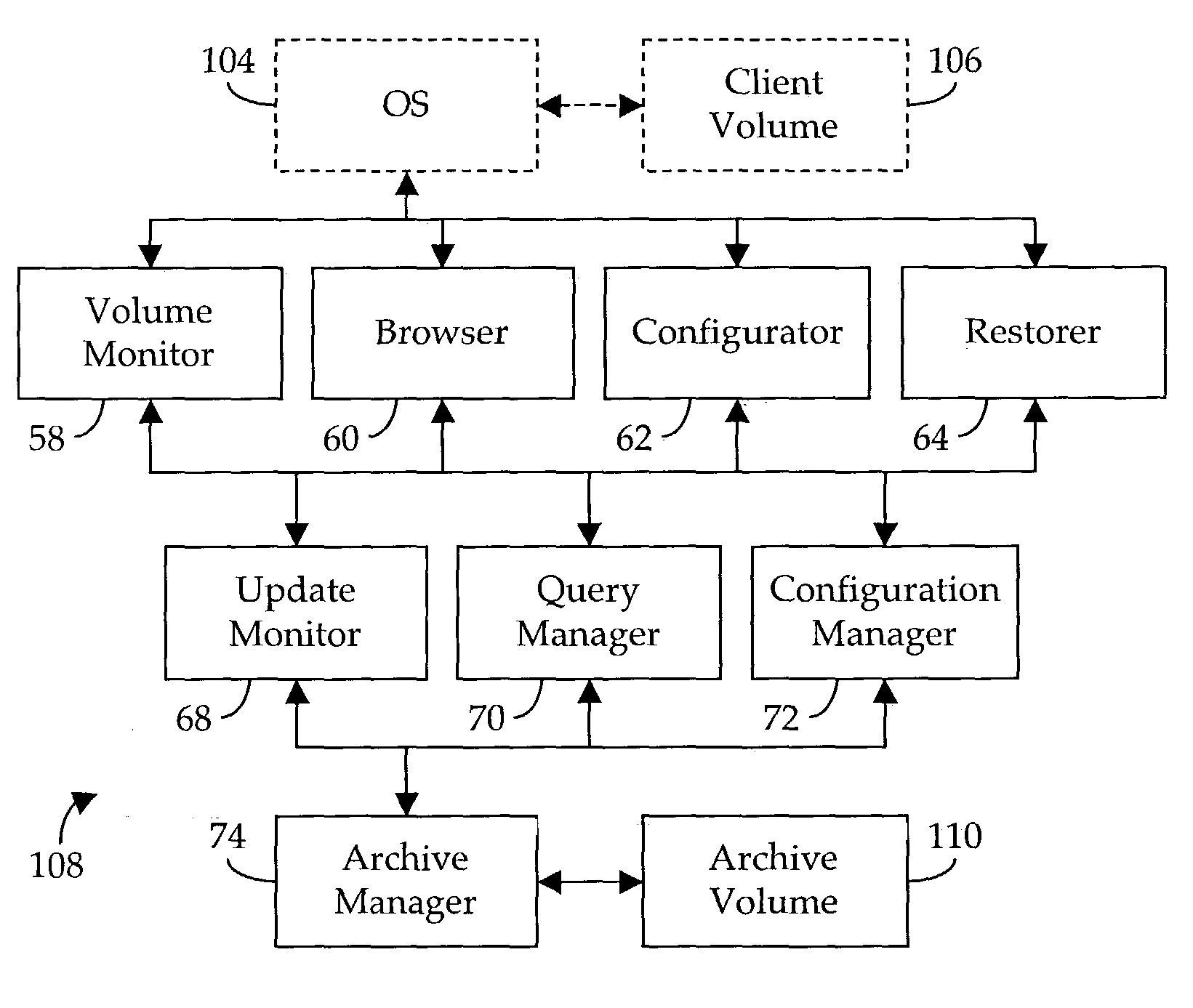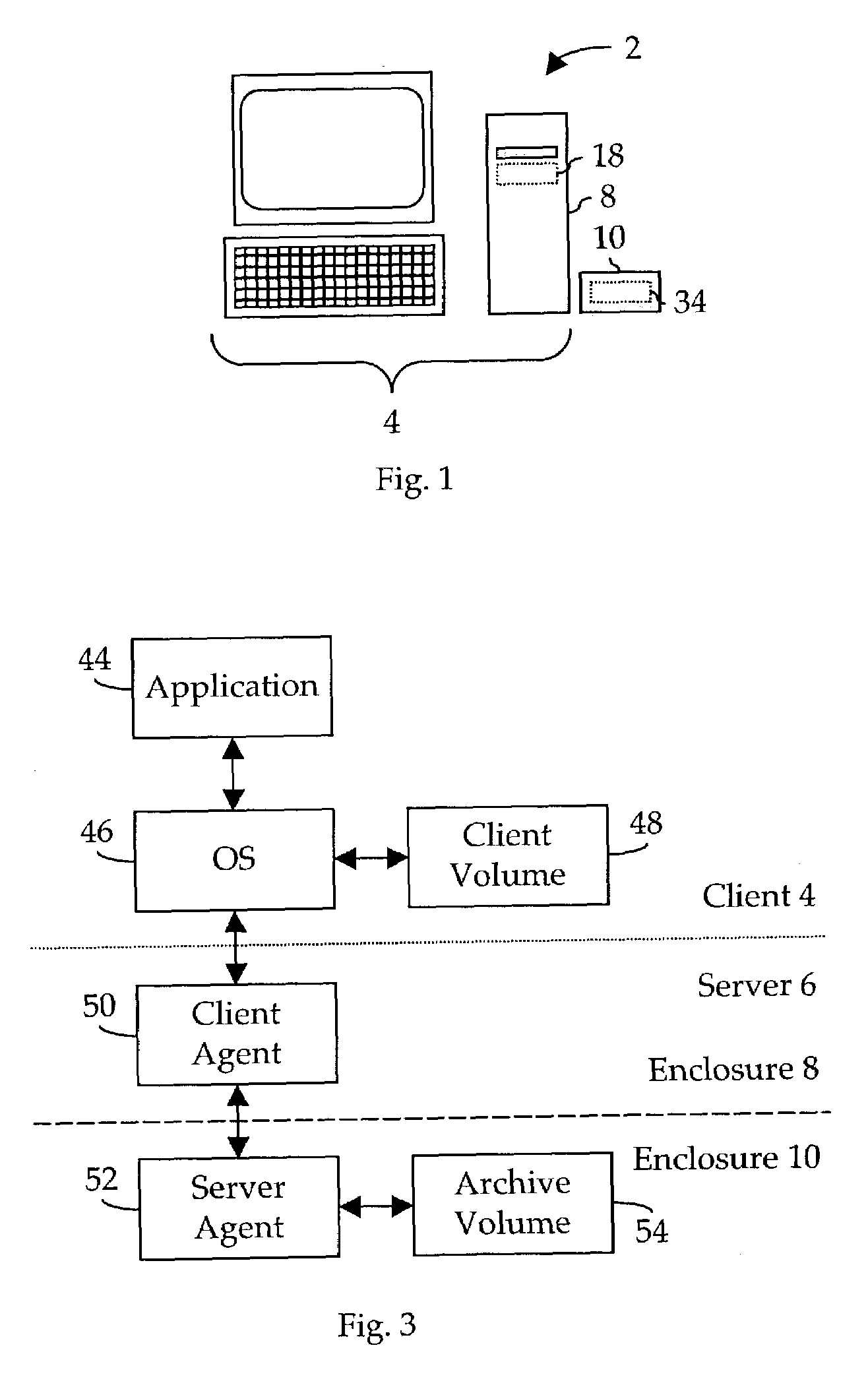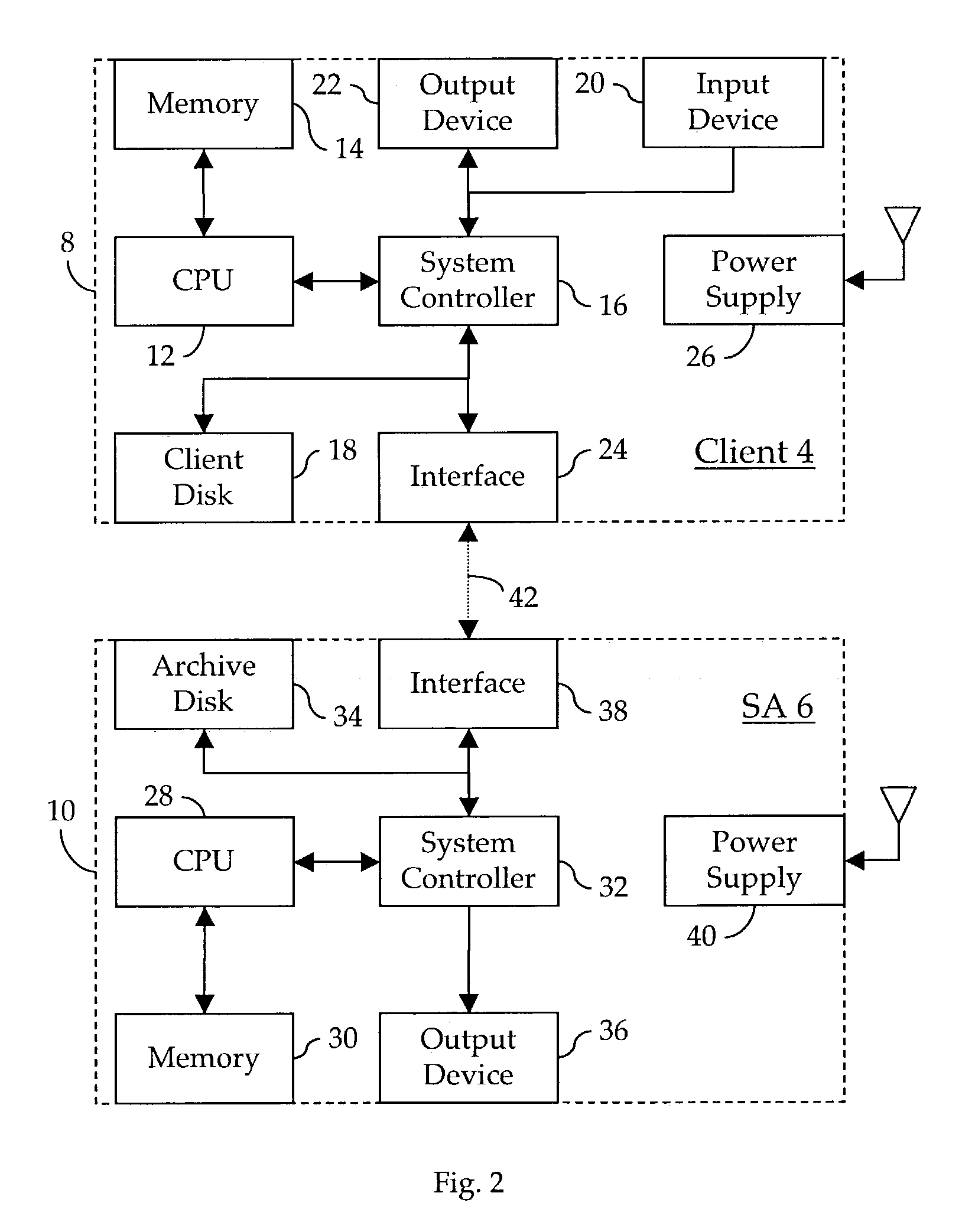Method and apparatus for automatically archiving a file system
a file system and automatic archiving technology, applied in the field of digital data processing systems, can solve the problems of system (or disk) no longer operable, content of one or more files comprising a volume or partition stored in the file system is corrupted irretrievably, recoverable failure is a failure in which the contents of the file system are corrupted or modified incorrectly,
- Summary
- Abstract
- Description
- Claims
- Application Information
AI Technical Summary
Benefits of technology
Problems solved by technology
Method used
Image
Examples
example 1
[0161]Here is an example of a linear filter, similar to typical backups showing the status of the archive over time. We assume a filter:[0162]A[−1t, 0t, 1t, 2t, 3t, 4t, 5t, 6t, 7t, 8t, 9t, 10t, 11t, 12t, 13t, 14t]
Here is the content of the archive over time with the object changes at times t0, t1, . . . t20 and the filter applied after the insertion of each new revision:
[0163]
Filter is −1 0 1 2 3 4 5 6 7 8 9 10 11 12 13 14Adding 0, archive becomes:0Adding 1, archive becomes:10Adding 2, archive becomes:210Adding 3, archive becomes:3210Adding 4, archive becomes:43210Adding 5, archive becomes:543210Adding 6, archive becomes:6543210Adding 7, archive becomes:76543210Adding 8, archive becomes:876543210Adding 9, archive becomes:9876543210Adding10, archive becomes:109876543210Adding11, archive becomes:11109876543210Adding12, archive becomes:1211109876543210Adding13, archive becomes:131211109876543210Adding14, archive becomes:14131211109876543210Adding15, archive becomes:1514131...
example 2
Linear Filter with Infrequent Changes
[0165]Now, here's the same filter applied to object changes at times t0, t3, t6, . . . t18, t21:
[0166]
Filter is −1 0 1 2 3 4 5 6 7 8 9 10 11 12 13 14Adding 0, archive becomes:0Adding 3, archive becomes:30Adding 6, archive becomes:630Adding 9, archive becomes:9630Adding12, archive becomes:129630Adding15, archive becomes:1512963Adding18, archive becomes:18151296Adding21, archive becomes:211815129
[0167]Again, notice that we capture revisions at equally spaced points in time.
example 3
Linear Filter with Frequent Changes
[0168]Now let's try a linear filter where the changes come at intervals smaller than our age intervals. Let's use the filter:[0169]A[−1t, 0t, 2t, 4t, 6t, 8t, 10t, 12t, 14t, 16t, 18t, 20t, 22t, 24t, 26t, 28t]
and apply it to a sequence of object changes at times t0, t1, t2, . . . t20.
[0170]
Filter is −1 0 2 4 6 8 10 12 14 16 18 20 22 24 26 28Adding 0, archive becomes:0Adding 1, archive becomes:10Adding 2, archive becomes:20Adding 3, archive becomes:320Adding 4, archive becomes:420Adding 5, archive becomes:5420Adding 6, archive becomes:6420Adding 7, archive becomes:76420Adding 8, archive becomes:86420Adding 9, archive becomes:986420Adding10, archive becomes:1086420Adding11, archive becomes:111086420Adding12, archive becomes:121086420Adding13, archive becomes:13121086420Adding14, archive becomes:14121086420Adding15, archive becomes:1514121086420Adding16, archive becomes:1614121086420Adding17, archive becomes:171614121086420Adding18, archive becomes:1816...
PUM
 Login to View More
Login to View More Abstract
Description
Claims
Application Information
 Login to View More
Login to View More - R&D
- Intellectual Property
- Life Sciences
- Materials
- Tech Scout
- Unparalleled Data Quality
- Higher Quality Content
- 60% Fewer Hallucinations
Browse by: Latest US Patents, China's latest patents, Technical Efficacy Thesaurus, Application Domain, Technology Topic, Popular Technical Reports.
© 2025 PatSnap. All rights reserved.Legal|Privacy policy|Modern Slavery Act Transparency Statement|Sitemap|About US| Contact US: help@patsnap.com



